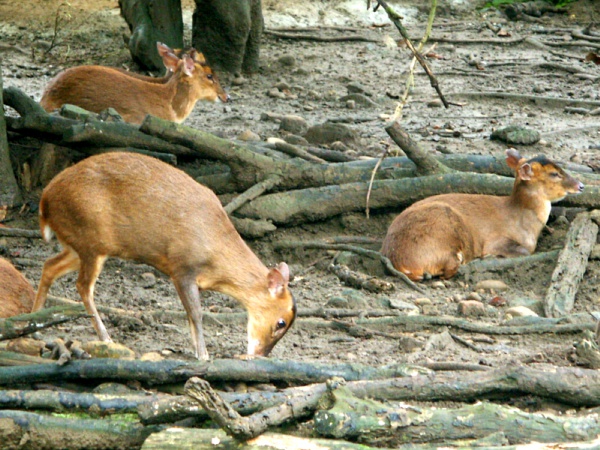Facts About Reeves's muntjac
Reeves's muntjac, also known as the Chinese muntjac, is a small deer native to southeastern China and Taiwan. It has also been introduced to several countries, including Belgium, the Netherlands, the United Kingdom, Ireland, and Japan. Named after John Reeves, an employee of the British East India Company, this deer is distinguished by its reddish-brown fur, striped facial markings, and creamy-white belly. Males are characterized by short antlers and elongated upper canines, while females exhibit bony lumps on their foreheads and black spots.
These muntjacs have a diverse diet, consuming herbs, flowers, shoots, berries, and nuts. A notable trait is their distinctive barking sound, particularly during mating season or when they feel threatened. They typically inhabit forests and shrublands, prefer solitary living, and are most active during dawn and dusk. Each deer defends its small territory using gland secretions to mark its space.
Reproduction occurs year-round, with females reaching sexual maturity within their first year. The gestation period lasts between 209 and 220 days.
In countries such as the UK and Japan, where Reeves's muntjac has been introduced, there are concerns about them becoming invasive and their populations growing too rapidly. Conservation efforts vary by region. For instance, Hong Kong has local laws protecting these deer. Despite their utility for their soft skin and culinary value, the International Union for Conservation of Nature (IUCN) lists Reeves's muntjac as a species of Least Concern due to their commonness and widespread distribution.
